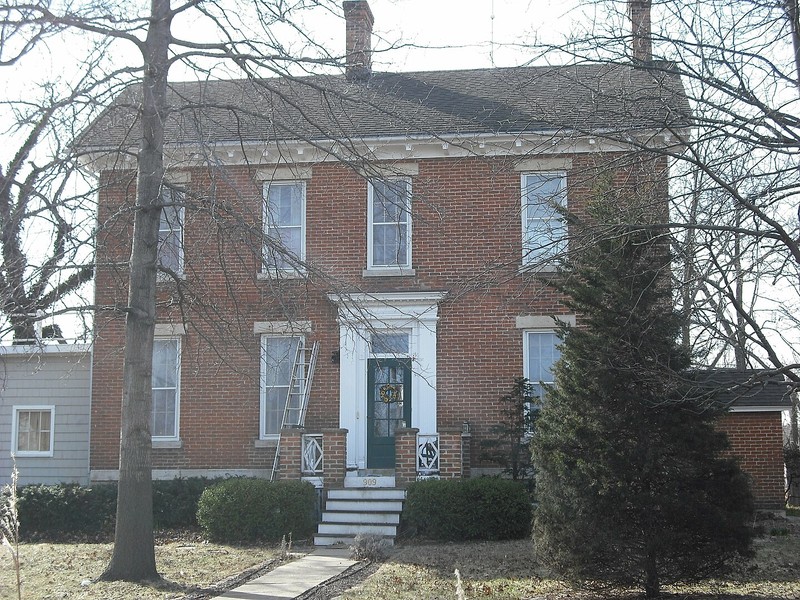Witter S. McCurdy House
Introduction
Text-to-speech Audio
The McCurdy house, an exemplary I-house (popular in the U.S. from roughly 1850 to 1890) constructed during Lawerenceville's post-Quantrill's Raid building boom around 1869, was home to active real estate speculator Witter S. McCurdy. He moved to Lawrence in 1858 from New York, where he was born and raised. Two years after purchasing the home, Witter sold it to his brother, Jesse; the McCurdy family owned the house until 1917.
Images
Witter S. McCurdy House

Backstory and Context
Text-to-speech Audio
Lawrence was a haven for anti-slavery activists leading up to and during the Civil War. Thus, it stood as a prime target for Confederate guerilla troop leader William Quantrill, who led a deadly and destructive surprise raid on Lawrence in 1863, referred to as "Quantrill's Raid." The city rebounded quickly, aided by the arrival of the transcontinental railroad branch to Lawrence in 1864, the opening of the University of Kansas (KU) in 1866, and the completion of two more railroads in 1867, resulting in a potent economic expansion, construction boom, and population growth, referred to as the City Building Period (1864 to 1873).
McCurdy seized on Lawrenceville's "City Building" real estate boom by purchasing several properties from the city's trustees in 1868, including the property where the now-historic home stands. McCurdy built the home around 1870, an I-house, built in the Folk House Federal style, typical for a transplanted New Englander who likely arrived in Lawrence with a preconceived notion of how a proper Kansas house should appear. At the time of purchase, the three-acre property mainly sat outside city limits; the home did not have a street in front of it until the 1880s. Within two years of building the house, Witter McCurdy sold it to his brother, Jesse, who lived there with his wife Emily and their four children. Jesse worked as a lawyer and land speculator. Jesse died in 1897 and Emily in 1902, leaving the home to their children, who exchanged ownership of the historic house several times until 1917.
Kathryn Leighton, a Black woman married to a White man, purchased the house in 1917 (unusual for the time). A talented musician, Kathryn was the only Black woman with an electric vehicle. Kathryn and her John did not reside in the house but instead managed it as a rental property for nearly thirty years; they sold the home shortly after the end of World War II.
The home changed hands a few times since the 1940s, and has undergone some additions and renovations. Still, it retains its historical appearance and stands as a reminder of Lawrence's "City Building" period in the wake of the Civil War and Quantrill's Raid.
Sources
Epps, Kristen. "Quantrill's Raid on Lawrence" Civil War on the Western Border: The Missouri-Kansas Conflict, 1854-1865. The Kansas City Public Library. Accessed March 21, 2024. https://civilwaronthewesternborder.org/encyclopedia/quantrills-raid-lawrence.
Ford, Susan Jezak. "Registration Form: Witter S. McCurdy House." National Register of Historic Places. nps.gov. 2001. https://npgallery.nps.gov/GetAsset/57b91a57-cc50-4735-9efe-bec1e76f1f10.
Wolfenbarger, Deon K. "East Lawrence Historic Resources Reconnaissance Survey." City of Lawrence Historic Resource Commission, Community Development Program. lawrenceks.org. August 21, 1995.
https://assets.lawrenceks.org/pds/planning/documents/East-Lawrence-Historic-Resources-Reconnaissance-Survey.pdf.
